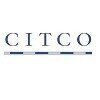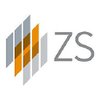Filter interviews by
Guidehouse Senior Lead Analyst Interview Questions and Answers
Guidehouse Senior Lead Analyst Interview Experiences
1 interview found
I applied via Approached by Company and was interviewed in Dec 2023. There were 3 interview rounds.
They donot have proper knowledge about the skill they are asking for. Very rude experience it shows their company culture and how they work. No dont join it will not work for experienced candidates
They donot have proper knowledge about the skill they are asking for. Very rude experience it shows their company culture and how they work. No dont join it will not work for experienced candidates
(2 Questions)
- Q1. Salary negotiation
- Q2. Date of joining
Interview Preparation Tips
Interview questions from similar companies

I applied via Referral and was interviewed before Nov 2022. There were 3 interview rounds.

(1 Question)
- Q1. Datastage real time scenario questions.
(1 Question)
- Q1. How did i manage work stress in past. Some technical questions.
Interview Preparation Tips

I applied via Approached by Company and was interviewed in Nov 2024. There were 2 interview rounds.
(3 Questions)
- Q1. How do you assess if a user story is complete or not. Have you heard about INVEST.
- Ans.
Assessing completeness of user stories using INVEST criteria.
INVEST stands for Independent, Negotiable, Valuable, Estimable, Small, and Testable.
A user story is complete if it meets all the criteria of INVEST.
Independence: User story should be self-contained and not dependent on other stories.
Negotiable: Details of the story can be negotiated between the team and stakeholders.
Valuable: Story should deliver value to the...
- Q2. Are you aware of RACI matrix.
- Ans.
Yes, RACI matrix is a tool used to clarify roles and responsibilities in a project or process.
RACI stands for Responsible, Accountable, Consulted, and Informed.
It helps in defining who is responsible for what tasks, who is accountable for the overall success, who needs to be consulted before decisions are made, and who needs to be kept informed.
For example, in a software development project, the Business Analyst might ...
- Q3. If there are multiple stakeholders and one of the stakeholder is old school and against the new requirement, how do you handle such stakeholder.
- Ans.
Address the concerns of the old school stakeholder by understanding their perspective, communicating effectively, and finding common ground.
Listen to the stakeholder's concerns and try to understand their perspective.
Communicate the benefits of the new requirement in a way that resonates with the stakeholder's values and priorities.
Find common ground by highlighting areas where the new requirement aligns with the stake...
(3 Questions)
- Q1. What is the difference between requirement gathering and requirement elicitation.
- Ans.
Requirement gathering is the process of collecting and documenting requirements from stakeholders, while requirement elicitation is the process of discovering and extracting requirements from stakeholders.
Requirement gathering involves documenting known requirements, while requirement elicitation involves uncovering hidden or unspoken requirements.
Requirement gathering typically involves interviews, surveys, and docume...
- Q2. What are the 3Cs of a user story.
- Ans.
The 3Cs of a user story are Card, Conversation, and Confirmation.
Card: A user story is typically written on a physical or digital card to capture the essence of the requirement.
Conversation: The user story should spark a conversation between the stakeholders to gather more details and clarify any doubts.
Confirmation: The user story should have acceptance criteria that define when the story is considered complete.
- Q3. Traceability matrix
Interview Preparation Tips
- Stakeholder Management
- Requirement Gathering
- user story

(5 Questions)
- Q1. What is Derivatives
- Q2. What is financial Markets
- Q3. V Lookup, X Lookup, H lookup
- Q4. Experience in SQL And Power bi
- Q5. Internship Experience

(5 Questions)
- Q1. Tell me about yourself
- Q2. Why you want to join kpmg?
- Q3. What you understand about the job?
- Q4. What is your work experience?
- Q5. How will you see yourself within 5 years?
Interview Preparation Tips

I applied via Naukri.com and was interviewed in Dec 2024. There were 4 interview rounds.
Set of questions on english , aptitude , all are at easy level
Sql basics and some query questions
(2 Questions)
- Q1. Why do u want to join zs ; what do u know about zs; where do u see urself after 5 years ; question on real life scenarios ;
- Q2. Question on real life scenarios
(2 Questions)
- Q1. Salary expectation
- Q2. When can u join
Interview Preparation Tips

I applied via Referral and was interviewed in Oct 2024. There were 2 interview rounds.
The aptitude test was interesting, Had a bunch of fun puzzles
(2 Questions)
- Q1. Tell me about yourself
- Ans.
I am a detail-oriented business analyst with a strong background in data analysis and problem-solving.
Experienced in gathering and analyzing business requirements
Skilled in creating data models and visualizations
Proficient in using tools like SQL, Excel, and Tableau
Strong communication and presentation skills
Certified in business analysis (e.g. CBAP)
- Q2. Where do you see yourself in 5 years
Interview Preparation Tips

I applied via Company Website and was interviewed in Jul 2024. There was 1 interview round.
(5 Questions)
- Q1. How to measure risk & returns
- Q2. Investment due diligence and performance calculation
- Q3. Why we should hire you
- Q4. Why you want to switch job
- Q5. Fixed income valuation methods

(2 Questions)
- Q1. Explain all types of joins
- Ans.
Different types of joins in SQL are inner join, left join, right join, and full outer join.
Inner join: Returns rows when there is a match in both tables
Left join: Returns all rows from the left table and the matched rows from the right table
Right join: Returns all rows from the right table and the matched rows from the left table
Full outer join: Returns rows when there is a match in either table
- Q2. Difference between having and where
- Ans.
The main difference between 'having' and 'where' in SQL is that 'having' is used with aggregate functions to filter groups, while 'where' is used to filter rows.
HAVING is used with GROUP BY to filter groups based on aggregate functions results
WHERE is used to filter rows based on conditions
HAVING is applied after GROUP BY, while WHERE is applied before GROUP BY
Example: SELECT department, AVG(salary) FROM employees GROU...
Skills evaluated in this interview

I applied via campus placement at Delhi College of Engineering (DCE), Delhi and was interviewed in Jul 2024. There were 3 interview rounds.
It was a 1 hour test. It consists of two sections (i) 8 ques were of Business case studies (ii) 12 ques were of quantitative aptitude.
(2 Questions)
- Q1. What is the difference between where and having clause ?
- Ans.
Where clause is used to filter rows before grouping, while having clause is used to filter groups after grouping.
Where clause is used with SELECT, UPDATE, DELETE statements to filter rows based on a condition.
Having clause is used with GROUP BY statement to filter groups based on a condition.
Where clause is applied before grouping, while having clause is applied after grouping.
Example: SELECT * FROM table_name WHERE co...
- Q2. One ques was a guesstimate problem.
(2 Questions)
- Q1. Self Introduction.
- Q2. Business case problem which was to be solved in 15 minutes.
Interview Preparation Tips
- SQL
- Maths
Skills evaluated in this interview
Guidehouse Interview FAQs
Tell us how to improve this page.
Guidehouse Interviews By Designations
- Guidehouse AR Caller Interview Questions
- Guidehouse Accounts Receivable Caller Associate Interview Questions
- Guidehouse Associate Interview Questions
- Guidehouse Junior Associate Interview Questions
- Guidehouse Senior AR Caller Interview Questions
- Guidehouse Junior Accounts Receivable Caller Interview Questions
- Guidehouse Senior Associate Interview Questions
- Guidehouse Accounts Receivable Associate Interview Questions
- Show more
Interview Questions for Popular Designations
Interview Questions from Similar Companies
Fast track your campus placements
Guidehouse Senior Lead Analyst Reviews and Ratings
based on 1 review
Rating in categories
|
Senior Associate
346
salaries
| ₹2 L/yr - ₹6.9 L/yr |
|
Quality Analyst
212
salaries
| ₹3.7 L/yr - ₹9 L/yr |
|
Process Associate
202
salaries
| ₹2 L/yr - ₹7 L/yr |
|
AR Associate
188
salaries
| ₹2.2 L/yr - ₹4.8 L/yr |
|
AR Caller
139
salaries
| ₹2 L/yr - ₹5.2 L/yr |

KPMG India

Deloitte

PwC

Ernst & Young
Calculate your in-hand salary
- Home >
- Interviews >
- Guidehouse Interview Questions >
- Guidehouse Senior Lead Analyst Interview Questions















